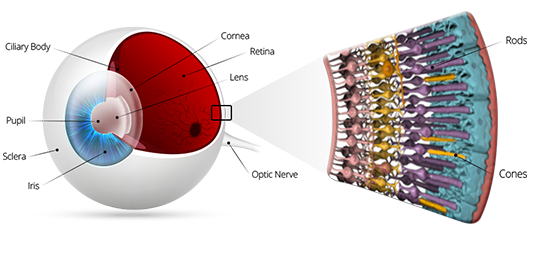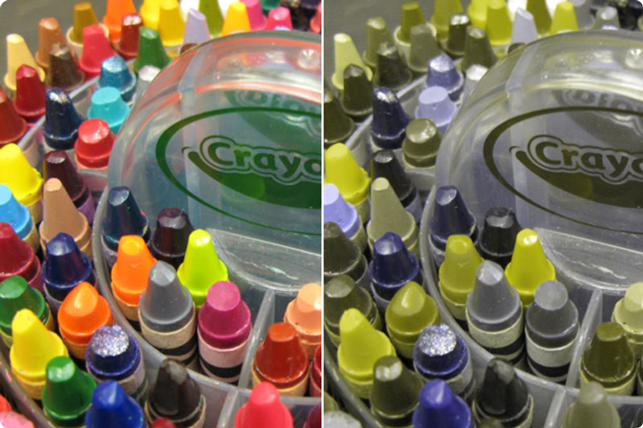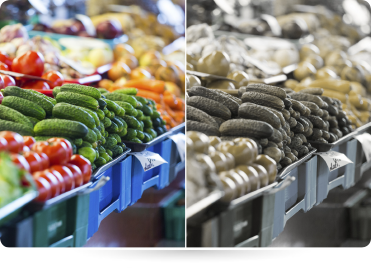


Color blindness, also called color vision deficiency, affects more than 10 million people in the United States alone. Up to 8% of the world’s male population is colorblind, while only 0.4% of those affected are women. The prevalence of color blindness varies by race, but researchers have more work to do to better understand how many people are affected.Therefore, it is necessary to pay more attention, allocate more funds and buy research papers that will allow for a wider research and analysis of the topic of color blindness.
Rods and cones are cells found in the back of the eye. Think of the retina as the sensor in a digital camera. It is light sensitive and is responsible for the first steps in the process of seeing the world around us. The retina contains two types of light-sensitive cells—rods and cones. Rods outnumber cones in the retina and are responsible for our vision in very dim light. Cones are responsible for all daytime vision, including color vision.


Cones are sensitive to color
There are 3 types of cone cells in the retina of humans. The scientific terms for these are L cones, M cones, and S cones. However, they are often referred to as “red” cones, “green” cones, and “blue” cones.

In people with normal color vision, each different type of cone contains a different light-sensitive pigment, popularly referred to as red, green, and blue photopigments.
Color vision is based on comparisons between the light absorbed by the different types of cones. Color vision deficiency occurs when people are missing either the normal red or green photopigments. The most severe forms occur when all the cones that would normally contain red or green photopigment are missing red photopigment (protanopia) and/or they are missing green photopigment (deuteranopia). Less severe forms of color vision deficiency occur when three types of cones are present, but one cone is not functioning properly.
Most colorblind people do not see the world in just black and white. However, people with the most severe forms of color blindness are missing out on the vast majority of the colors that people with normal color vision see.
Useful links:
Evaluating the Impact of Technology on Academic Integrity in the Digital Era

Normal
Red/Green color-blind
Anomalous Trichromacy

Protanomalous

Deuteranomalous

Tritanomalous
Dichromacy

Protanopia

Deuteranopia

Tritanopia
Monochromacy

Achromatopsia
If you think that you or your child may suffer from any of these types of color vision deficiency, see a qualified health care practitioner for potential diagnosis.
Read more about testing for color blindness.